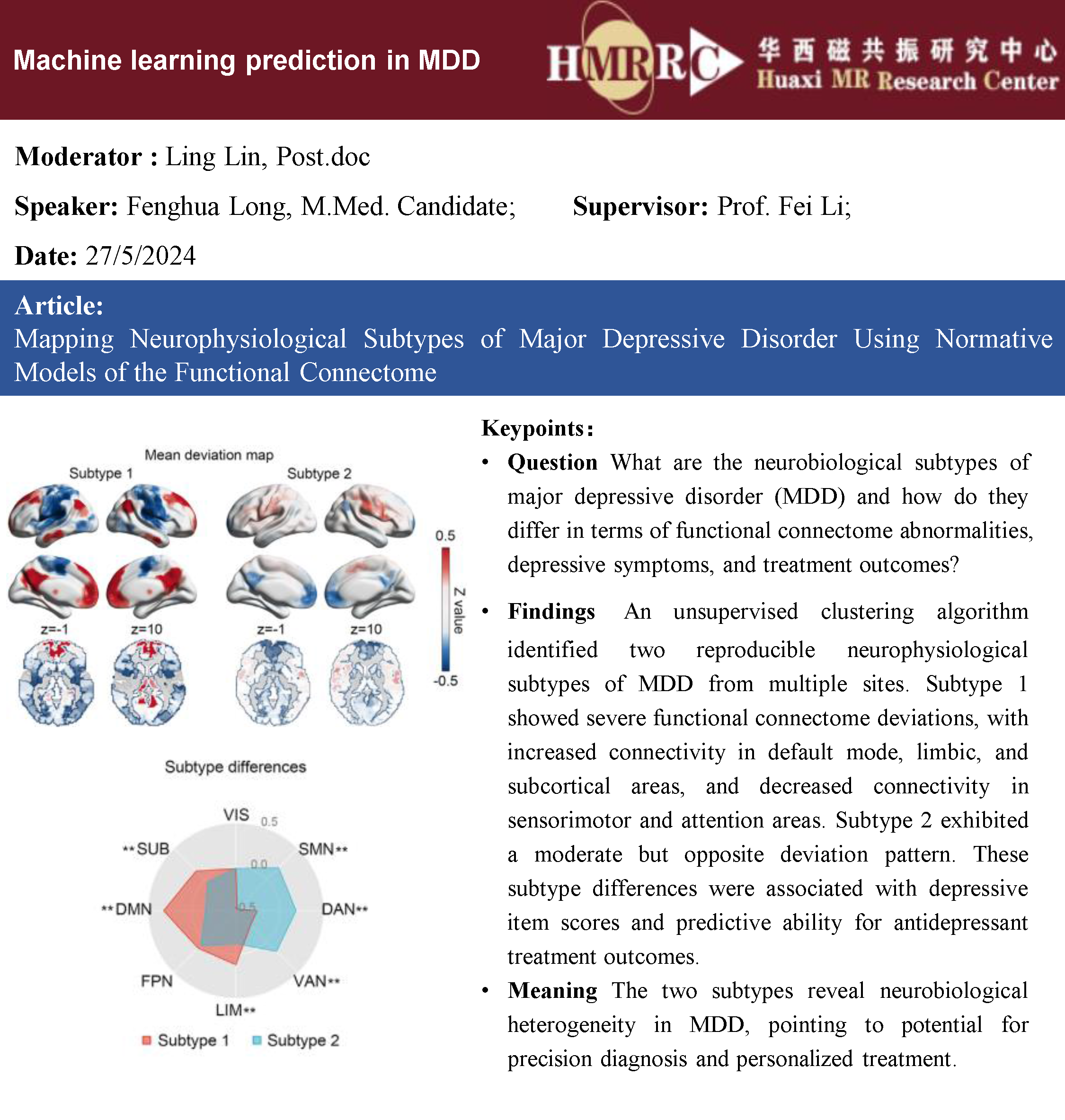Topic: Machine learning prediction in MDD.
Speaker 1 : Fenghua Long, M.Med. Candidate
Speaker 2 : Mengyao Chen, M.Med. Candidate
Date: 27/05/2024, 14:00
Location: The lab of HMRRC (10011, the 8th Teaching Building)
Speaker 1: Fenghua Long, M.Med. Candidate
Keypoints:

Speaker 2 : Mengyao Chen, M.Med. Candidate
Title: Functional connectivity signatures of major depressive disorder: machine learning analysis of two multicenter neuroimaging studies.
Keypoints:
Question: Is resting-state functional connectivity (FC) a reliable biomarker for Major Depressive Disorder (MDD)?
Findings: In this study, which utilized two large multicenter neuroimaging datasets, machine learning techniques, including support vector machines (SVM) and graph convolutional networks (GCN), achieved a mean classification accuracy of 61% for differentiating MDD patients from healthy controls. The study identified thalamic hyperconnectivity as a significant feature in MDD. Classification accuracy for non-medicated vs. medicated subgroups was 62%, and for sex classification, it ranged from 73-81%.
Meaning: Resting-state FC shows potential as a biomarker for MDD, especially due to thalamic hyperconnectivity. However, moderate accuracy suggests FC alone may not be reliable for diagnosis, highlighting the need for refined models and larger datasets.
